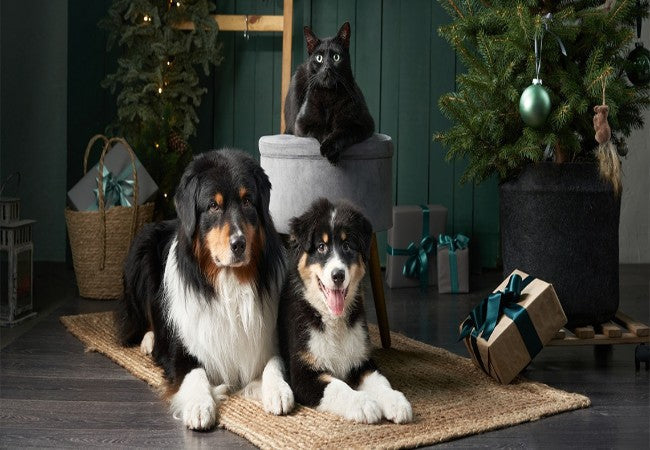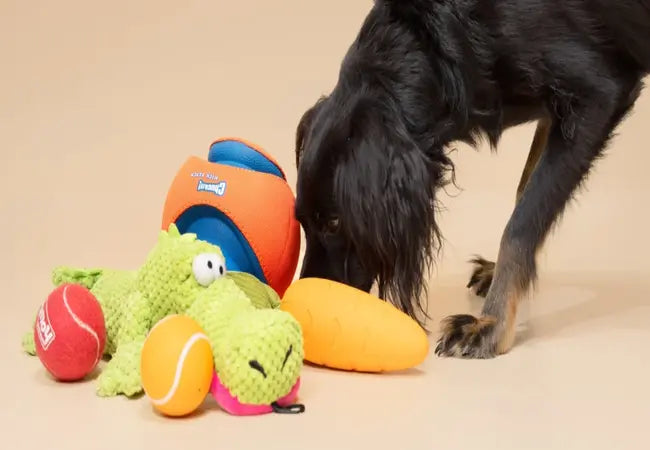In this article
🐶 Vet Guide 2025: Benign Sebaceous Gland Tumors in Dogs – Causes, Types & Treatment 🩺
By Dr Duncan Houston, BVSc
If you’ve noticed new “warts” popping up on your dog’s skin—especially if they’re a senior—you’re not alone. Many pet parents assume these bumps are harmless viral warts, but in older dogs, they are often something different: benign sebaceous gland tumors. 🧴🐾
In this comprehensive guide, I’ll walk you through what sebaceous tumors are, how to identify them, when to consider removal, and how to manage your dog’s skin health long term. Let’s get started! 🩺
🧠 What Are Sebaceous Gland Tumors?
These tumors originate from the sebaceous glands—oil-producing glands found in the skin. They’re common in older dogs and, while often benign, they can multiply and cause discomfort or complications. Many resemble warts but are not viral in nature. 🎯
These growths may appear:
- 📍 Anywhere on the body
- 👵 Most often in senior dogs
- 🔄 Frequently in large numbers
Unlike viral papillomas seen in younger dogs (mostly around the face), sebaceous tumors can appear nearly anywhere and tend to persist or increase in size. 😬
🔍 When Should You Remove a Sebaceous Growth?
While most are harmless, removal might be necessary if the growth:
- 🩸 Bleeds or becomes ulcerated
- 😖 Causes itching or irritation
- ✂️ Interferes with grooming or gets caught in clippers
- ❓ Cannot be definitively diagnosed without a biopsy
- ⚠️ May be malignant or concerning based on location or growth pattern
Sometimes, even a benign growth can cause more harm than good if it’s bothersome to the dog or at risk of infection. 🧼
🧪 Types of Sebaceous Gland Tumors
There are several types of sebaceous growths, and they often look similar. Diagnosis usually requires microscopic evaluation or biopsy. Let’s explore the four main categories: 🔬
1. 🧁 Nodular Sebaceous Hyperplasia
Roughly 50% of cases fall into this group. These are technically not tumors, but overgrowths of sebaceous gland cells. They’re round, lumpy, sometimes crusty, and may occasionally bleed. Common in breeds like:
- 🐶 Cocker Spaniels
- 🐶 Miniature Schnauzers
- 🐶 Beagles
- 🐶 Poodles
- 🐶 Dachshunds
Hyperplasias can eventually evolve into benign tumors if not monitored. 🧬
2. ⚫ Sebaceous Epithelioma
Accounting for around 37% of growths, these resemble hyperplasias but occur more often on the eyelids or head. They often darken to a black color and may develop in larger breeds.
Though once considered benign, they can behave in a low-grade malignant fashion over time—another reason early removal and diagnosis is wise. 🧠
3. 🔵 Sebaceous Adenoma
Adenomas are actual benign tumors and likely arise from areas of hyperplasia. They tend to remain localized but can grow larger with time. Removal is typically curative. 🏥
4. 🔴 Sebaceous Carcinoma
Only about 2% of sebaceous tumors are malignant. These can invade surrounding tissue and ulcerate. Thankfully, even malignant sebaceous tumors rarely metastasize (spread), but monitoring is essential. Cocker Spaniels may be predisposed. ⚠️
💉 Treatment: When and How to Remove
Most benign sebaceous tumors can be safely removed using local anesthesia, especially since many affected dogs are older and not ideal candidates for general anesthesia. 💉
However, keep in mind:
- ✂️ Only a few growths can be removed at a time using local anesthesia
- 🩺 Priority is given to those that bleed, irritate, or interfere with daily life
- 🧪 Suspicious or fast-growing lumps should always be biopsied
Your vet may recommend full removal or monitoring depending on your dog’s age, comfort level, and health status. 🐕🦺
📈 How Fast Do These Tumors Grow?
Most sebaceous tumors grow slowly and may remain the same size for years. However, they can occasionally become inflamed, infected, or suddenly increase in size—especially if they are scratched or licked. 👅
If this happens, book a vet visit right away to prevent infection or ulceration. 🏥
🧴 Grooming and Skin Management Tips
Maintaining healthy skin is essential in managing sebaceous tumors—especially if your pet is prone to new growths:
- 🧼 Use mild shampoos designed for sensitive or senior dog skin
- 🧽 Check your pet’s skin weekly for new or changing growths
- 📸 Photograph lumps regularly to track changes in size or appearance
- 🧴 Ask your vet about omega-3 supplements to support skin health
Groomers should be informed about any growths to avoid nicking them during trims. 💇♂️
🐱 Sebaceous Growths in Cats
While less common, older cats can also develop sebaceous gland growths. They tend to be solitary and slow-growing, often located on the head or neck. Biopsy is essential to rule out other skin conditions or rare malignancies. 🐈
🧠 What If I Don’t Want Surgery?
It’s understandable to be cautious about surgery for an older pet. If the growth isn’t bothering your dog and your vet is confident it’s benign, monitoring may be a safe option. That said, you should:
- 🔍 Monitor for changes in color, size, or discharge
- 🧪 Be open to biopsy if there’s any doubt
- 💬 Use services like Ask A Vet for second opinions
In many cases, doing something is better than doing nothing—especially when it comes to your dog’s comfort. 🩷
📲 Need Help Tracking Skin Growths?
Skin issues can be tricky, but you don’t have to face them alone. Use AskAVet.com or download the Ask A Vet App for on-demand help from veterinary professionals. 🩺
With the app, you can:
- 📷 Upload and track photos of your dog’s skin growths
- 💬 Chat live with a vet to discuss new or changing lumps
- 📅 Set reminders for monitoring or rechecks
- 📚 Access skin care guides, videos, and tutorials
It’s like having your vet in your pocket! 🐾📱
📝 Final Thoughts
Most sebaceous gland tumors in dogs are harmless—but that doesn’t mean they should be ignored. From irritation to potential malignancy, knowing when and how to take action is key to your pet’s comfort and health. 🐕
If you’re ever unsure about a lump or bump, your veterinarian—or the experts at Ask A Vet—are just a message away. With proper care and monitoring, your senior pup can enjoy their golden years lump-free and happy. 🐾






